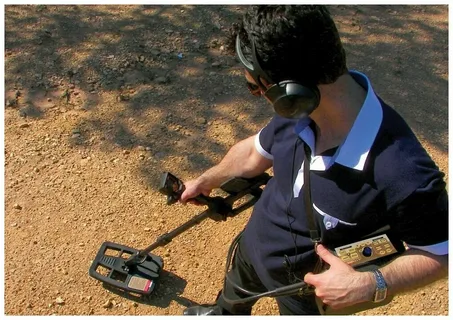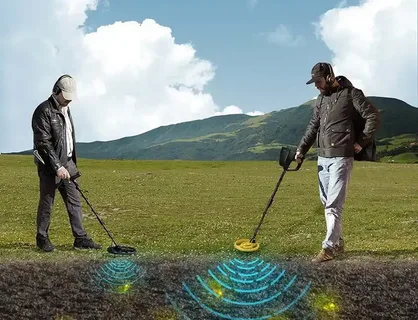Underground mining is a crucial industry that plays a significant role in extracting valuable natural resources from beneath the earth’s surface. This industry provides the essential raw materials for manufacturing and construction processes, making it an integral part of global economies. In this article, we will delve into the world of underground mining, exploring the various opportunities and challenges it presents. From the technical and logistical complexities to the environmental and safety considerations, we will uncover the diverse aspects of this industry and its impact on the world.
Uncovering Opportunities: The World of Underground Mining is a comprehensive guide to the ins and outs of the underground mining industry. The book covers various topics related to underground mining, including the history and evolution of the industry, mining methods and technologies, safety and environmental considerations, and the future outlook for underground mining. It provides valuable insights for industry professionals, researchers, students, and anyone with an interest in the field of underground mining.
The History of Underground Mining: From Pickaxes to High-Tech Equipment

The history of underground mining can be traced back to ancient times when early civilizations used primitive tools like pickaxes and shovels to extract valuable minerals from beneath the earth’s surface. Over the centuries, mining technology has evolved significantly, with the introduction of high-tech equipment such as drills, explosives, and conveyor systems to increase efficiency and productivity.
The Industrial Revolution saw a major shift in underground mining, with the development of steam-powered engines and other mechanical innovations that allowed miners to delve deeper into the earth and extract more resources than ever before. In the 20th century, the introduction of electricity, automation, and advanced safety measures further transformed the mining industry, making it safer and more efficient for workers.
Today, underground mining operations rely on state-of-the-art equipment, including cutting-edge drilling and blasting technologies, as well as remote-controlled machinery and sophisticated monitoring systems. These advancements have enabled miners to access hard-to-reach deposits and extract valuable minerals with minimal environmental impact.
Overall, the history of underground mining reflects a continuous progression from manual labor and rudimentary tools to highly mechanized and technologically advanced operations. As the demand for resources continues to grow, the mining industry is likely to further innovate and adapt to meet the challenges of the future.
The Environmental Impact of Underground Mining: Balancing Resources and Preservation

Underground mining can have a significant impact on the environment due to the disturbance of land, alteration of landscapes, and potential pollution of groundwater and surface water. This is especially true with extraction processes like breaking and grinding, as well as the use of chemicals and reagents. The creation of mine tailings, which are waste materials left over after valuable minerals have been extracted, can also contribute to environmental degradation. Additionally, the construction of mine shafts and tunnels can disrupt natural habitats and wildlife.
Balancing the need for natural resource extraction with environmental preservation is crucial in mitigating the impact of underground mining. Strategies such as proper mine planning, reclamation of mined areas, and responsible waste management can help minimize environmental harm. Utilizing advanced technologies and best practices in mining operations can also contribute to reducing the environmental footprint of underground mining activities.
It is essential for mining companies to work closely with regulators, environmental experts, and local communities to ensure that underground mining operations are conducted in a sustainable and environmentally responsible manner. This can involve implementing environmental monitoring programs, conducting environmental impact assessments, and engaging in transparent communication with stakeholders. Ultimately, the goal is to achieve a balance between resource extraction and environmental preservation to ensure the long-term sustainability of both the mining industry and the natural environment.
The Role of Safety Regulations in Underground Mining Operations

Underground mining operations are inherently dangerous due to the presence of heavy machinery, potential rockfalls, explosions, and exposure to harmful gases. Safety regulations play a crucial role in ensuring the protection of workers and the minimization of risks in these environments. These regulations typically cover areas such as equipment maintenance, ventilation, emergency procedures, communication systems, and the use of personal protective equipment. Additionally, regulations may also address issues related to the stability of mine walls and ceilings, as well as the prevention of fires and explosions. These measures are enforced through regular inspections, training programs, and strict adherence to safety protocols to create a work environment that prioritizes the well-being of those working in underground mining operations.
Innovations in Underground Mining Technology: Improving Efficiency and Safety

Innovations in underground mining technology have been focused on improving efficiency and safety in recent years. Advancements in areas such as automation, robotics, and remote monitoring have enabled miners to operate more efficiently while reducing the risk of accidents and injuries.
One key innovation is the use of automated vehicles and drilling equipment, which can navigate through narrow and hazardous underground tunnels without putting human operators at risk. This not only improves safety but also allows for continuous operation in areas where it may not have been feasible before.
Another innovation is the implementation of remote monitoring systems that allow operators to keep track of equipment and conditions in real-time from a safe distance. This has greatly improved the ability to identify and address potential safety hazards before they become serious issues.
Additionally, advancements in ventilation and dust control technologies have helped to reduce the health risks associated with underground mining, such as exposure to harmful airborne particles. These improvements have had a significant impact on the overall safety and well-being of workers in underground mining operations.
Overall, the ongoing innovations in underground mining technology continue to drive improvements in efficiency and safety, making it possible to extract valuable resources while minimizing the risks to workers and the environment.
Challenges Faced by Underground Mining Companies: From Geology to Labor

Underground mining companies face various challenges, from the complexities of geology and mineral extraction to labor issues. Geologically, underground mining operations must navigate difficult terrain, varying rock strata, and potential hazards such as methane gas and water ingress. This requires advanced technology and expertise to ensure safe and efficient operations.
Labor challenges are also prevalent, as underground mining requires a skilled and specialized workforce. Recruiting and retaining qualified personnel can be difficult, and ensuring their safety and well-being in the harsh underground environment is a top priority for mining companies. Additionally, labor disputes and regulatory requirements can present significant hurdles for underground mining operations.
Overall, underground mining companies must navigate a range of challenges, from geological complexities to labor concerns, in order to achieve success in their operations.
The Economic Impact of Underground Mining: Employment and Revenue Generation
Underground mining has a significant impact on employment and revenue generation within a region. It creates job opportunities for mining staff, engineers, and technicians, as well as supporting roles such as maintenance workers and administrative staff. Additionally, the revenue generated from underground mining activities contributes to local economies through taxes, royalties, and direct spending by mining companies. This can stimulate growth in local businesses and contribute to government budgets for public services and infrastructure development. Overall, the economic impact of underground mining is significant and plays a vital role in many regional economies.
Exploring the Depths: The Fascinating World of Underground Mining
“Exploring the Depths: The Fascinating World of Underground Mining” is a comprehensive guide that delves into the intricate and captivating process of underground mining. The book provides a detailed look at the various methods and techniques used in underground mining, as well as the tools and equipment required for these operations. Additionally, it explores the environmental and safety considerations associated with underground mining, giving readers a well-rounded understanding of the industry. With in-depth information and stunning visuals, this book is a valuable resource for anyone interested in learning more about the world beneath the Earth’s surface.
A Look into the Future of Underground Mining: Sustainable Practices and Automation
This publication delves into the future of underground mining, focusing on the adoption of sustainable practices and automation. It explores the various technological advancements and innovations that are driving the industry toward a more environmentally friendly and efficient approach to mining. The report also examines the potential benefits and challenges associated with the integration of automation and sustainable practices in underground mining operations. Additionally, it provides insights into the evolving role of technology in shaping the future of the mining industry and highlights the key considerations for companies looking to make a successful transition toward sustainable and automated underground mining practices.
Case Studies: Success Stories and Failures in Underground Mining Projects
Case Studies: Success Stories and Failures in Underground Mining Projects provides detailed examples of both successful and unsuccessful mining projects. These case studies offer insights into challenges faced, strategies employed, and lessons learned in underground mining. The information can be valuable for industry professionals, researchers and academics seeking to understand the complexities and risks involved in underground mining projects.
The Human Element in Underground Mining: Stories of Resilience and Innovation
See also: metal detectors for gold
The Human Element in Underground Mining: Stories of Resilience and Innovation is a book that focuses on the personal experiences and stories of individuals working in the underground mining industry. It delves into the challenges and adversities that miners face and explores their resilience and innovative approaches to overcoming these obstacles. The book sheds light on the human aspect of mining, highlighting the strength and determination of individuals within this demanding and often dangerous profession. Through personal narratives and firsthand accounts, the book offers a unique perspective on the human element in underground mining and its impact on the industry as a whole.

